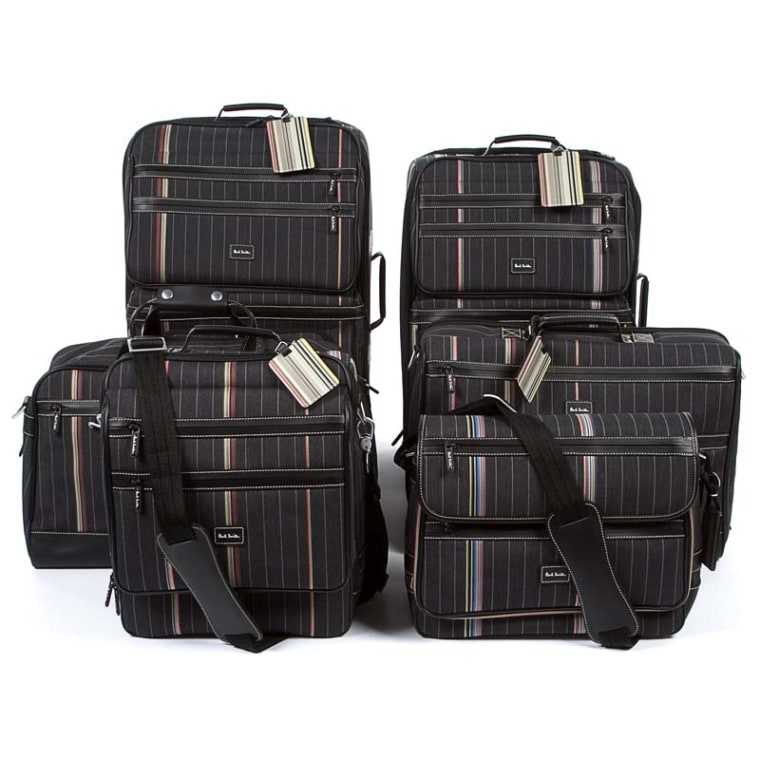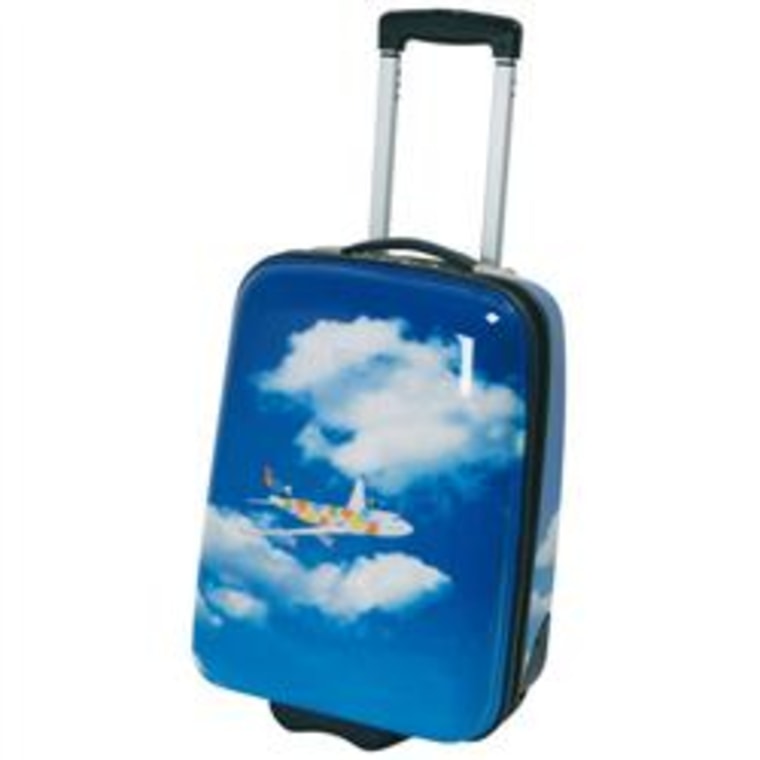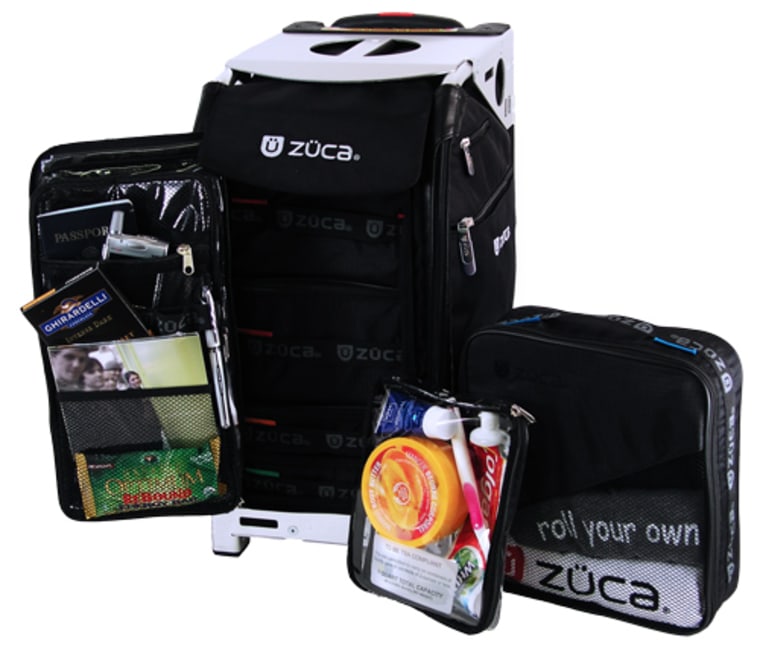Aboard a crowded Italian train last fall, I discovered I had taken a polished Milanese businesswoman’s seat by mistake, which meant leaving my humdrum, over-packed suitcase in one compartment to hunt down a patch of open floor space in another. When I returned moments later, my bag had been stolen—something that never would have happened had I been able to just sit on it.
With a little foresight, I’d have brought along a ZÜCA Pro, the most fantastically functional bag because it both fits comfortably in an airplane’s overhead bin and serves as a chair. A sturdy seat that can support 300 pounds without a hitch is integrated into the bag’s aluminum alloy frame, while inside there are removable ballistic nylon packing pouches that stack like drawers. The Sport model has a dual wheel system that climbs stairs. Which in elevator-challenged Euro train stations, would also have been nice.
Despite the advent of restrictive government-imposed regulations that make it tempting to check it all (or chuck it all) instead of cramming liquid and gel in a plastic bag for all to see, carry-ons are the way to go. Reason number two: reduced waiting upon arrival. Reason number one? Carry-on bags have, demonstrably, never been cooler. Even Samsonite.
Obviously, it’s always easier to travel light, and carry-ons can take the lug out of luggage faster than you can say “butler.” This was never truer than today, when the use of high-tech materials and innovative design has produced a veritable revolution in carry-on luggage style and functionality.
To comply with carriers’ and security organizations’ rules on the size of carry-on baggage and size and weight of checked bags, luggage companies are redesigning bags, using new, lightweight materials and frames. And restrictions on the size of bottles of liquids travelers can carry onto flights have created somewhat of a cottage industry: Some bags (the ZÜCA Pro among them), now come with a TSA-compliant, clear, flexible, plastic pouch.
A carry-on bag must by definition fit in an airplane’s overhead bin, meaning it cannot exceed certain dimensions. The ones typical to most airlines are 9 inches (depth) by 14 inches (width) by 22 inches (height), or 45 linear inches. However, with the exception of obviously smaller bags, it’s always a good idea to check with individual airlines for dimension requirements and weight restrictions. These vary not just domestically vs. internationally but also airline by airline. Aircraft size itself can be a factor in what you’re allowed to bring on board, too.

Most—but not all—carry-ons today are “roll-aboards,” with pull-out trolley handles that enable you to wheel the suitcase. (The style originated with a Northwest Airlines pilot in the late 1980s.) But otherwise, it’s anything goes—especially in terms of the way a bag looks. Our selection of cool carry-ons was made on the basis of toughness, layout (from outside pockets to interior compartments), and style.
Cory Depiero, head of business development at high-end travel boutique chain Flight 001, also emphasizes the fashion and functionality combination. He says when scoping out the hottest new luggage that “we’re looking for functionality that also takes into account fashion, trends, appearance and style, and staying ahead of other luggage dealers.”
It’s no surprise that Mandarina Duck, the legendary luggage line founded by Paolo Trento in Bologna in 1977, is one of the top-selling brands at store Flight 001, but that’s not all the store (with outposts from New York to Dubai) has on offer. There are sleek Samonsites made with cutting edge ballistic nylon and polycarbonate materials, marvelous shiny and sturdy pieces from Japanese designer Hideo Wakamatsu, and the latest looks from hot German brands Titan and Rimowa.

Michele Marini Pittenger, president of the Travel Goods Association, a trade group of luggage manufacturers, suppliers and retailers, suggests you first determine what purpose your bag will have to serve. Is it for business or vacation, for an overnight or weekend trip, or a month-long sojourn? Will it need to accommodate electronics? Will it be used for airplane or car travel, for commuting to work by public transportation, or for walking?
“The answers to all those questions will determine what type of bag to look for, and you can then take a look at what style and colors are available, and which you prefer,” she said.
If the consumer must navigate a sea of choices, at least he or she can take comfort in the fact that, at least at higher-end stores like Flight 001, the goods have essentially been pre-screened. “We look at every detail, from durability to affordability, and we ask if this is a bag for a frequent or occasional traveler,” says Depiero. “Urban sophisticated is the basis on which we select merchandise.”
